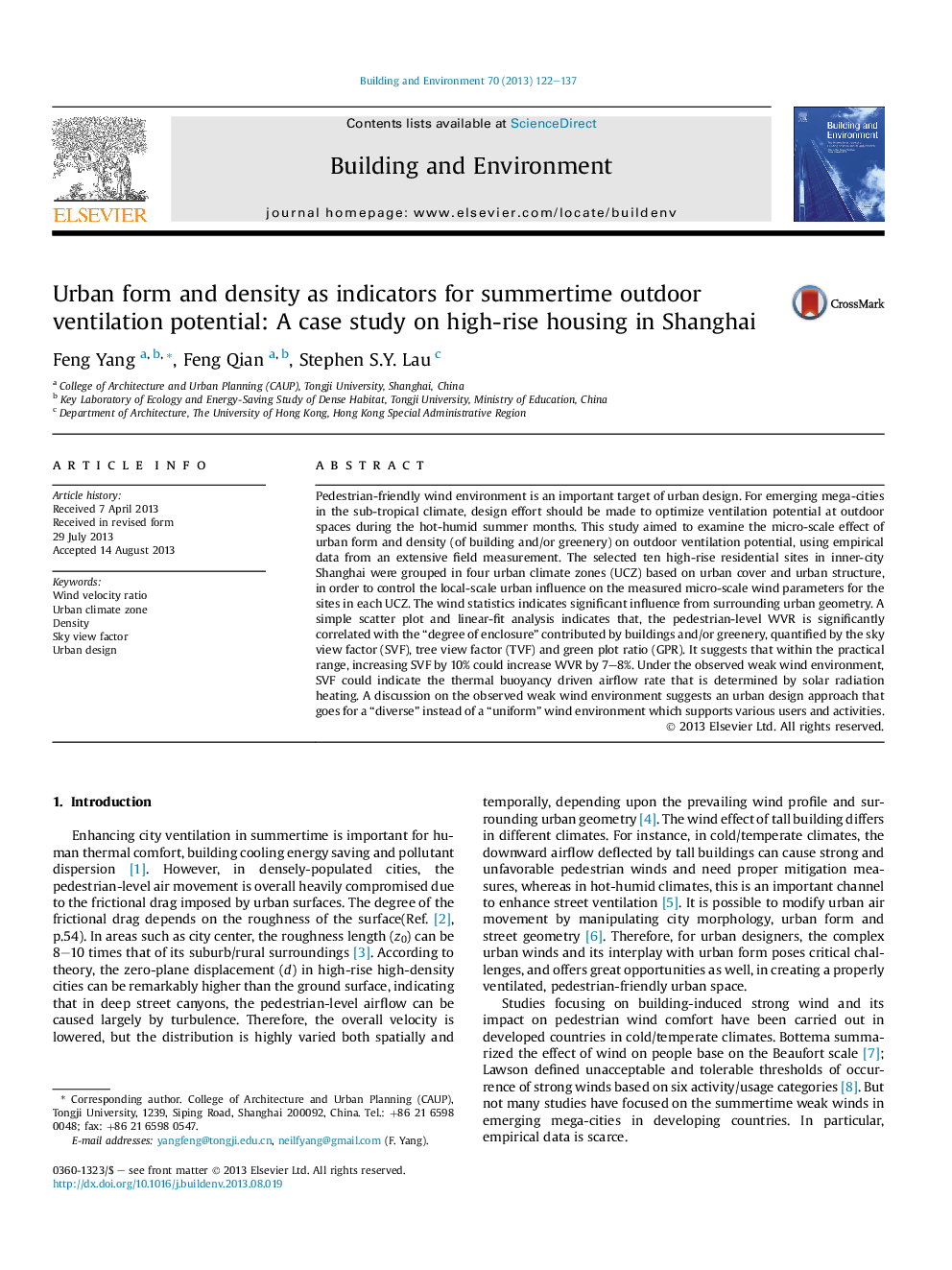| Article ID | Journal | Published Year | Pages | File Type |
|---|---|---|---|---|
| 6700781 | Building and Environment | 2013 | 16 Pages |
Abstract
Pedestrian-friendly wind environment is an important target of urban design. For emerging mega-cities in the sub-tropical climate, design effort should be made to optimize ventilation potential at outdoor spaces during the hot-humid summer months. This study aimed to examine the micro-scale effect of urban form and density (of building and/or greenery) on outdoor ventilation potential, using empirical data from an extensive field measurement. The selected ten high-rise residential sites in inner-city Shanghai were grouped in four urban climate zones (UCZ) based on urban cover and urban structure, in order to control the local-scale urban influence on the measured micro-scale wind parameters for the sites in each UCZ. The wind statistics indicates significant influence from surrounding urban geometry. A simple scatter plot and linear-fit analysis indicates that, the pedestrian-level WVR is significantly correlated with the “degree of enclosure” contributed by buildings and/or greenery, quantified by the sky view factor (SVF), tree view factor (TVF) and green plot ratio (GPR). It suggests that within the practical range, increasing SVF by 10% could increase WVR by 7-8%. Under the observed weak wind environment, SVF could indicate the thermal buoyancy driven airflow rate that is determined by solar radiation heating. A discussion on the observed weak wind environment suggests an urban design approach that goes for a “diverse” instead of a “uniform” wind environment which supports various users and activities.
Keywords
Related Topics
Physical Sciences and Engineering
Energy
Renewable Energy, Sustainability and the Environment
Authors
Feng Yang, Feng Qian, Stephen S.Y. Lau,
